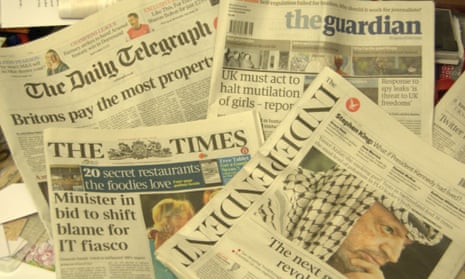“So the writer who breeds
More words than he needs
Is making a chore
For the reader who reads”
Dr Seuss
There’s an endless appetite among film buffs for the contents of the cutting-room floor. We’re forever being offered outtakes and alternative endings and “director’s cuts” of movies. But what do newspaper editors excise from raw copy destined for the printed page? What would a “writer’s cut” look like?
When commissioning news stories, desk editors invariably ask for more words than they need, and writers invariably file more words than they were asked to. This is just common sense: it’s better for a story to be too long than too short, because cutting it down is much quicker than padding it out.
Furthermore, stories move on. New details come to light; police issue statements; witnesses (and, increasingly, celebrities on Twitter) give reactions. And sometimes a bigger story breaks, evicting the first story from its home and sending it snivelling to a smaller slot.
As a result, desk editors and subeditors generally find themselves with an article that’s anything from 5% to 500% too long for the allocated space. Some of the reporter’s sweat-spattered words have to go. (The biggest cut I’ve had to make was to a collection of portraits of influential media folk, which were to run at full length on the internet, but in a considerably smaller space in the paper. Total overmatter: 60,000 words. A novella. That was a fun day.)
There are several schools of opinion on how to go about this. “Cut from the top,” say some. And it’s true that a few writers – mostly inexperienced ones – are guilty of beating around the bush at the start of a story, setting the scene, offering anecdotes, quotations, and twee descriptions of the decor, when all the reader wants is to know what’s happened. But this is a lesson that most reporters learn early, and besides, it usually only saves you a couple of lines.
Others recommend starting at the bottom. Once you’ve conveyed the essential facts of a story, the immediate background to the events, and the reactions of the most important players, things tend to tail off a little, with more detailed context, waffly quotations from bit-part actors, and speculation as to future developments. These can usually be shed with minimal damage to the story.
Over the centuries, editors have devised a plethora of space-saving tricks. We run paragraphs together – reporters, particularly at news agencies, seem to have a phobia of writing paragraphs consisting of any more than one sentence, and stories often read more coherently when organised into meatier chunks.
Abbreviations are another easy option. Often, for example, you can save yourself a crucial couple of lines by replacing all instances of “Liberal Democrats” with “Lib Dems”.

Quotations, too, are highly expendable. People – politicians in particular – are prone to waffle, wander off the point and repeat themselves, and we’re under no obligation to recount their meanderings in full. You can usually boil their sentiment down to a sentence or two without any compromise in meaning.
Some editors systematically strip out all instances of the word “that” – “He said that he was coming” – but this is sometimes a false economy, as it saves space, but wastes the reader’s time. While constructions like “The prime minister said that he was appalled by the news” and “She insisted that she was right” read well enough, with some verbs, the omission of “that” sounds unnatural: “He complained the service was bad.” It’s even worse when the verb in question is transitive: “He claimed the ground was uneven” and “She denied the charge was trumped up” lead the brain down a cul-de-sac that it then has to reverse out of.
But much of the time, I’ve found, the greatest economies can be found in the reporter’s prose. Literary colossi from Cicero to St Exupéry, from Shakespeare to Seuss, have expatiated on the virtues of concision (although Hardy and Joyce were largely silent on the matter), and in this attention-deficient era, when hard news is competing with videos of burping hamsters and revelations about Michael Gove’s favourite Game of Thrones character, the need to get to the point is surely greater than ever.
Yet while there are a handful of writers whose prose is so beautifully crafted that cutting a single word is like pulling teeth, many more make our jobs easy by employing 20 words where 10 would do. Perhaps understandably, given the intense time pressure they’re sometimes under, reporters are often guilty of taking a scattergun approach to writing, throwing several words at an idea in the hope that one will stick.
I find I can usually save one or two lines with what I call “Wikicuts”. You know the sort of thing: “Lady Gaga , real name Stefani Joanne Angelina Germanotta, whose hits include Poker Face and Telephone, became embroiled in a new scandal yesterday when ... ” Chances are, if you’re reading an article about Gaga, you’ll already know this stuff.
Cliches, those hoary old troopers that are drafted in more or less, I suspect, unconsciously, are also prime candidates for the chop: landmark speech, raging controversy, flagship policy, major row, ignominious exit, vast majority, iconic , but hey , count ‘em , whisper it! . I hit the delete key with extra glee when removing these gems.
Another stock phrase I look out for is “The announcement comes as ... ” – a Google search shows that on any given day, it’s trotted out around 200 times by various news outlets – which is generally just a limp effort at linking two events whose connection is already glaringly obvious. In most cases, it can be expunged altogether: “Access to a GP seven days a week by 2020 would be guaranteed under a Tory government, David Cameron will announce on Tuesday ... The announcement comes as the work and pensions secretary, Iain Duncan Smith, said he was introducing benefit cards for claimants with addiction issues such as alcoholism or drugs.” Similarly, “The decision comes two weeks after” can be downsized to “Two weeks ago”.

Finally – and this is where a small amount of skill comes in – there’s tautology. In a newspaper with so little space, aimed at readers with so little time, there should be no excuse for superfluity, but we’re at it all the time. Rather than show you what I would do, though, for a bit of fun, let’s see if you can identify for yourselves the redundant words in the following (genuine) excerpts. What would you cut?
“The impact was soon followed by the roar of a fighter jet above the blacked-out town below.”
“A top state secondary school adds an extra £21,000 to house prices in the local area.”
“The America’s Cup is currently embroiled in bitter acrimony.”
“Clegg said: ‘The Conservatives have got to ask themselves a really fundamental question,’ adding, ‘If they constantly run after Ukip, it has only one destination.’”
“Signs of a diplomatic breakthrough on the Syrian civil war at the G8 summit in Northern Ireland appeared unlikely yesterday.”
“Steinmetz’s wealth is estimated to be worth more than $4bn (£2.6bn).”
“Cleveland Fire Brigade received nearly 240 calls for help during the flooding, which washed away two cars. Their drivers made a narrow escape.”
“Air Marshall Iain McNicholl, formerly the RAF’s deputy commander of operations, said Scotland would need to buy up to 30 foreign fighters from abroad for as much as £1.7bn.”
“The figures show post-retirement life expectancy in the UK is now lower than previously expected.”
“Sixteen local authority areas – all in England – have been identified as being at greater risk of complaints of alleged vote-rigging being reported.”
“Pubs can currently be converted to a range of other uses without planning permission.”
“They made the admission yesterday after the campaigner and three media organisations – the Guardian, BBC’s Newsnight and the Press Association – applied for an explanation for the reasons why the conviction was being overturned.”
I hope this article has thrown a little light on the news editing process. But if you want a fuller picture, just compare any story in the newspaper with its online equivalent. Because of time constraints, and because space on the web isn’t an issue, we generally run stories there in full, warts, cliches, redundancies and all. But given that concision isn’t just about space – it’s about time, and elegance, and clarity, and precision – is it perhaps time that we revisited this policy?

Comments (…)
Sign in or create your Guardian account to join the discussion